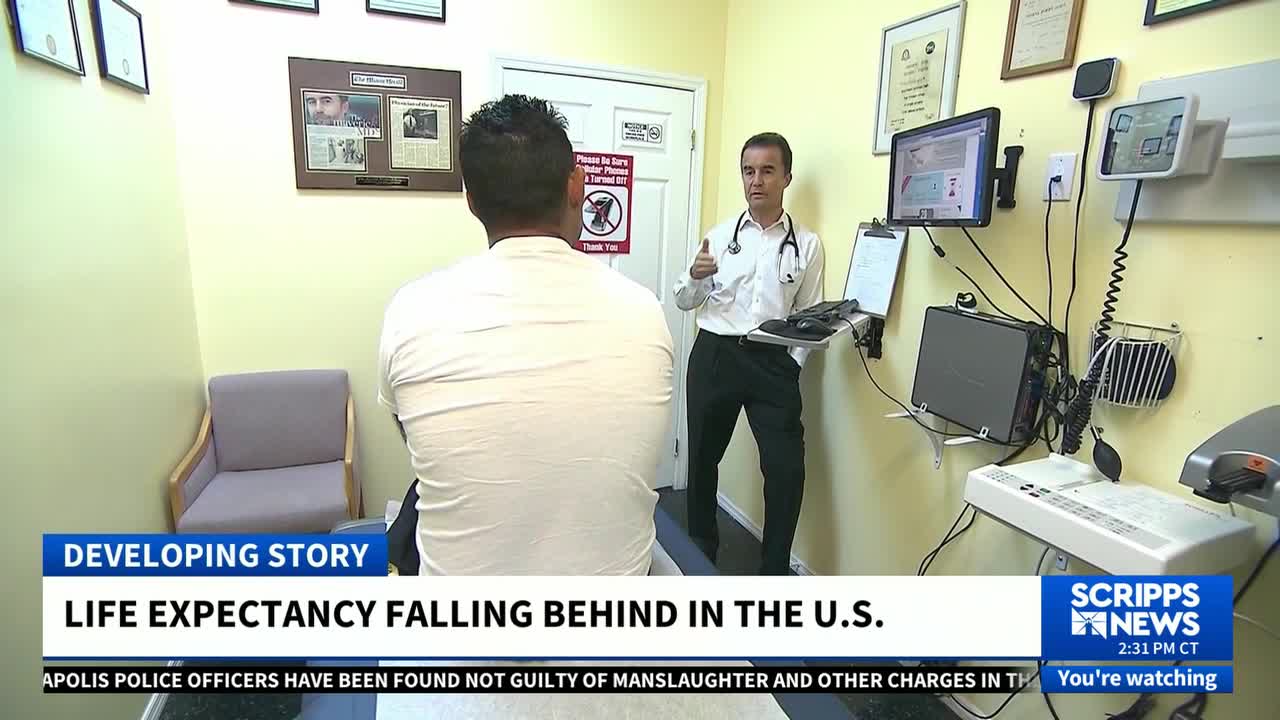Americans are living longer, thanks to pandemic's end, fewer opioid deaths

Average life expectancy in the U.S. increased by almost a year in 2023, rebounding to a level not reached since the COVID-19 pandemic, according to figures released Thursday by the Centers for Disease Control and Prevention.
U.S. average life expectancy was 78.4 years in 2023 ‒ nearly 11 months longer than in 2022 ‒ mostly due to far fewer COVID-19 deaths. It was the second consecutive year the nation's life expectancy increased after dropping more than two years from 2019 to 2021.
"There was a concern that we would have trouble rebounding to pre-pandemic life expectancy," said Dr. Steven Woolf, director emeritus of the Center on Society and Health at Virginia Commonwealth University, who said the new longevity estimates are "very encouraging."
COVID-19 deaths plummeted by 73% last year as the pandemic emergency declaration ended and more Americans gained protection through vaccination or previous infection. In 2022, COVID-19 was the fourth leading cause of death, but it dropped to the 10th leading cause of death last year.
The good news is that longevity was not limited to fewer COVID-19 deaths. Age-adjusted death rates dropped last year for nine of the top 10 causes of death. Only the death rate for cancer, which is the second leading cause of mortality, did not change significantly.
Heart disease remained the leading cause of death, followed by cancer, accidents, stroke, respiratory disease, Alzheimer's, diabetes, kidney disease, liver disease and COVID-19, according to the CDC's provisional data.
Fewer Americans die from drug overdose
In another report Thursday, the CDC said drug overdose deaths decreased by 4% in 2023, the first drop since 2018. Drug overdose deaths have surged over the last two decades as the U.S. has been gripped by an addiction epidemic. Age-adjusted drug overdose deaths increased from 8.9 deaths per 100,000 in 2003 to 32.6 in 2022. Last year, overdose deaths dipped to a rate of 31.3 per 100,000.
Overdose deaths from synthetic opioids such as fentanyl − which began to rise a decade ago − finally dropped last year. The decline comes amid increased nationwide efforts to widely distribute lifesaving opioid overdose reversal drugs naloxone to people at high risk, give more people access to opioid addiction treatments such as buprenorphine and raise public awareness about the risks of illicit fentanyl.
These public health efforts to curb overdose deaths are working, said Dr. Joshua Sharfstein, a Johns Hopkins University public health professor.
"These strategies to help people who are using drugs avoid dying from fentanyl are beginning to pay off," said Sharfstein, who also is director of the Bloomberg American Health Initiative.
The overdose deaths have continued to decline through the first half of 2024, according to Biden administration officials. Last month, the White House Office of National Drug Control Policy Director Dr. Rahul Gupta said the CDC's provisional data showed drug overdose deaths declined 14.5% from July 2023 through June 2024.
Gupta cited efforts to make naloxone more accessible and affordable and efforts to track down the supply of illicit fentanyl at the border. "The latest data show that our efforts are working, and as a result, there were 16,000 fewer overdose deaths over the last year," he said.
US life expectancy lags other nations
Americans' average lifespan lagged those in other wealthy nations before COVID-19 worsened longevity, Woolf said.
Deaths among young and middle-aged adults were largely in four categories: drug overdoses, suicide, alcohol-related deaths and chronic diseases such as high blood pressure, diabetes and obesity.
"The position that we were in before the pandemic struck was already rather precarious," Woolf said. "Something is still seriously wrong with the health of Americans because our life expectancy had been stagnating for the decade leading up to the pandemic," while life expectancy increased in other wealthy nations.
Although some commonly refer to increased mortality among young- and middle-aged adults as "deaths of despair," Woolf said such a term does not fully capture what's happening with these working-age Americans. Woolf said his research team has identified 35 causes of death on the upswing among younger adults, which suggests a broader problem than despair.
Nearly all age groups gained longevity
While death rates did not change among infants and children under 4, longevity for all other age groups improved last year. Death rates for adults ages 25 to 34, 45 to 54 and 55 to 64 all dropped more than 9%, the CDC said.
Longevity also improved across all races and genders, the CDC said. Death rates for Hispanic males and American Indian and Alaska Native males and females dropped more than 10%. Death rates also decreased for Asian, Black and white populations.
The average life expectancy for males increase by one year to 74.8 years in 2023. Females gained .9 year for an average life expectancy of 81.1 years.